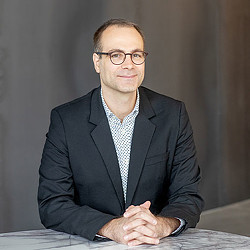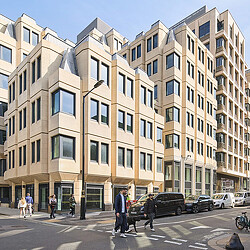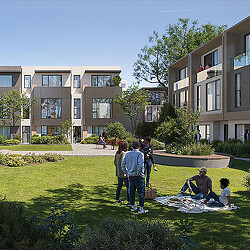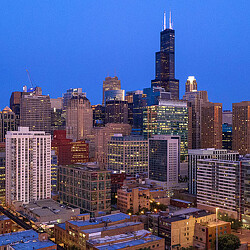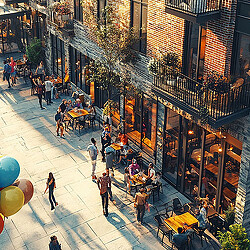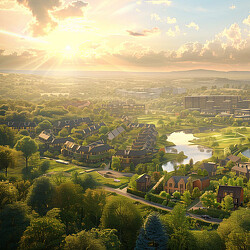Belonging Begins at Home:
Why Attainable Housing Is a Civic Imperative
We explore five strategies that demonstrate how design, policy, and planning can come together to build more inclusive, resilient communities.
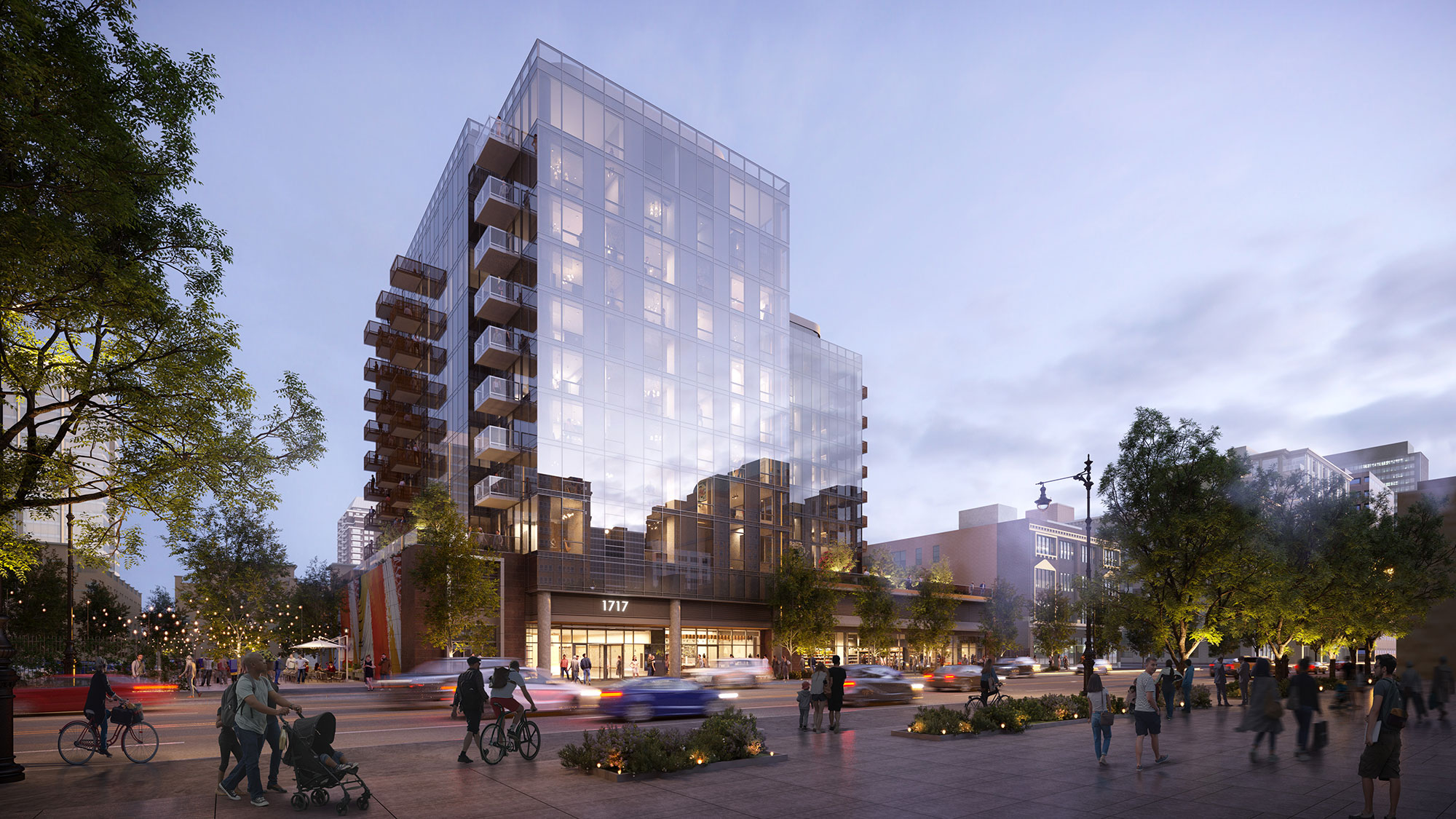
In cities like Chicago, the conversation about housing affordability is no longer confined to the lowest-income brackets. Middle-income earners — teachers, healthcare workers, service industry professionals — are also struggling to find stable, long-term housing in neighborhoods with access to opportunity, transit, and culture. The result is a housing squeeze that threatens to hollow out the very communities that give our cities life.
A recent Gensler City Pulse 2025 study underscores this reality: while 71% of Chicago residents report satisfaction with their city, yet over 80% of residents cite cost of living as a deciding factor in whether to stay or go. The report emphasizes that people are drawn to cities by tangible factors like job opportunity and affordability, but they stay for intangible ones like emotional connection, pride, and belonging. As such, addressing the housing crisis requires more than additional supply — it demands a rethinking of what urban housing can and should be.
Across the city of Chicago, rising costs and stagnant housing supply are pushing market-rate housing further out of reach for many residents. As neighborhoods become more desirable, they also become more exclusive. The scarcity of attainable, well-designed housing for middle-income families is not just a housing issue; it’s an urban sustainability issue. The lack of diverse housing options has contributed to increased displacement, longer commute times, and an eroding sense of belonging in the very communities that make Chicago vibrant.
Here are five strategies that demonstrate how design, policy, and planning can come together to build more inclusive, resilient communities:
1. Designing for Flexibility as a New Model for Attainability
The development at 1717 South Michigan Avenue in the South Loop, currently at the final stage of construction, represents a compelling alternative to this pattern. Developed by CMK Companies and designed by Gensler, this residential tower exemplifies a thoughtful response to the challenges of attainable housing in an urban context. The project features 149 residential units, ground-floor retail, and a rich amenity suite across 12 stories, blending pragmatic function with visionary design.
What sets this development apart is its flexibility: a number of units are designed with layouts that evolve alongside the lives of their residents. From convertible apartments to multi-bedroom units that can adapt for intergenerational families, the architecture supports not just affordability, but longevity. This approach echoes global best practices seen in cities like Tokyo, Singapore, or Stockholm, where flexible space planning is central to multigenerational living.
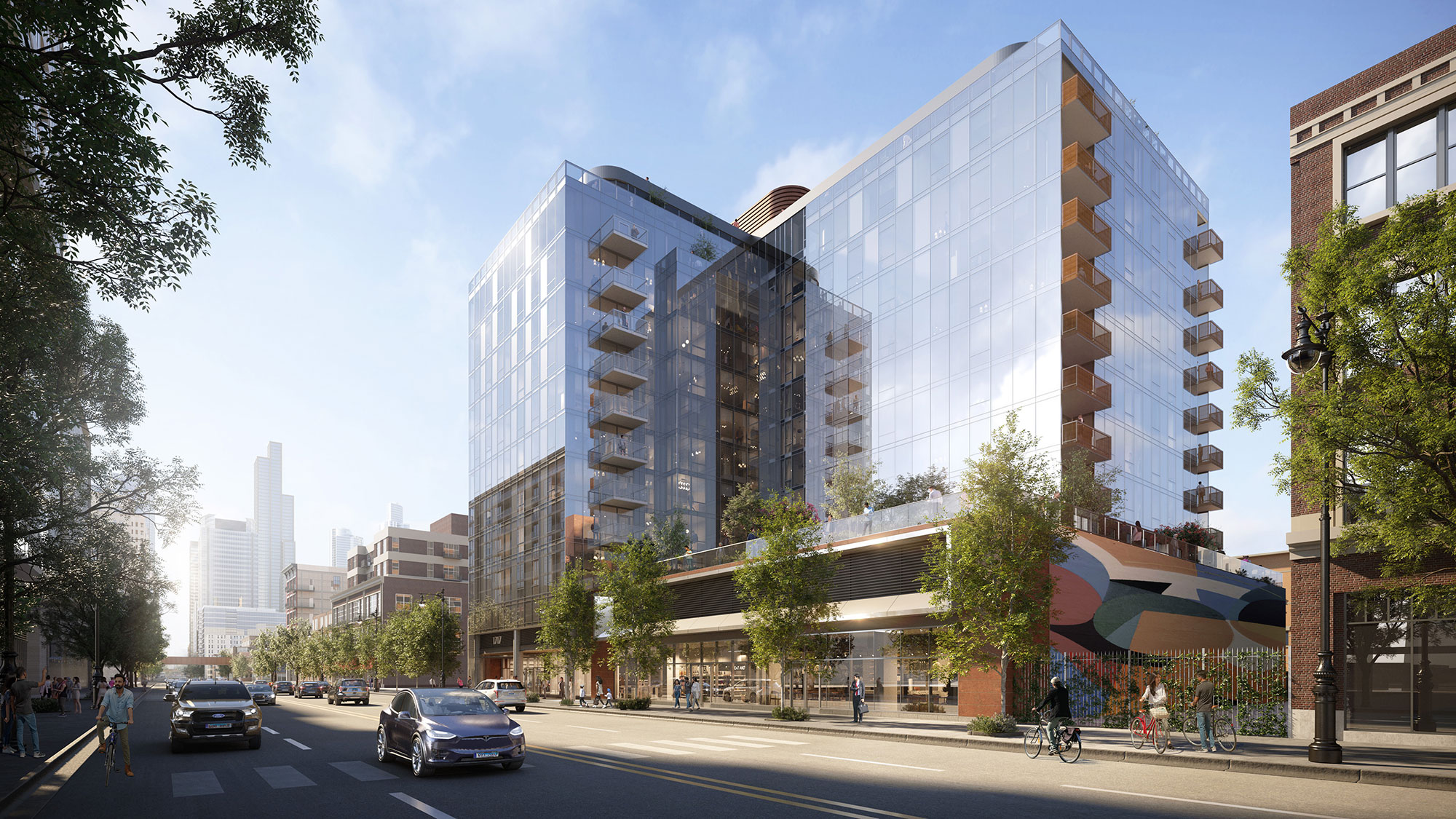
2. Urban Living That Centers People
Located between the historic Motor Row District and the Museum Campus, 1717 South Michigan benefits from seamless access to transit, both CTA and Metra, abundant parkscapes, and the lakefront, as well as restaurants, cafes, and upscale retail. The building integrates a third-floor indoor/outdoor amenity deck, fitness center, and coworking spaces designed not just for convenience, but to foster interaction and community. These spaces acknowledge what the Gensler City Pulse 2025 report calls one of the primary predictors of urban retention: a sense of emotional attachment to place.
When residents have access to vibrant, accessible, and sociable environments, they are more likely to stay. As noted in Gensler’s City Pulse report, people are drawn to cities by affordability and opportunity, but they stay because of pride, identity, and belonging.
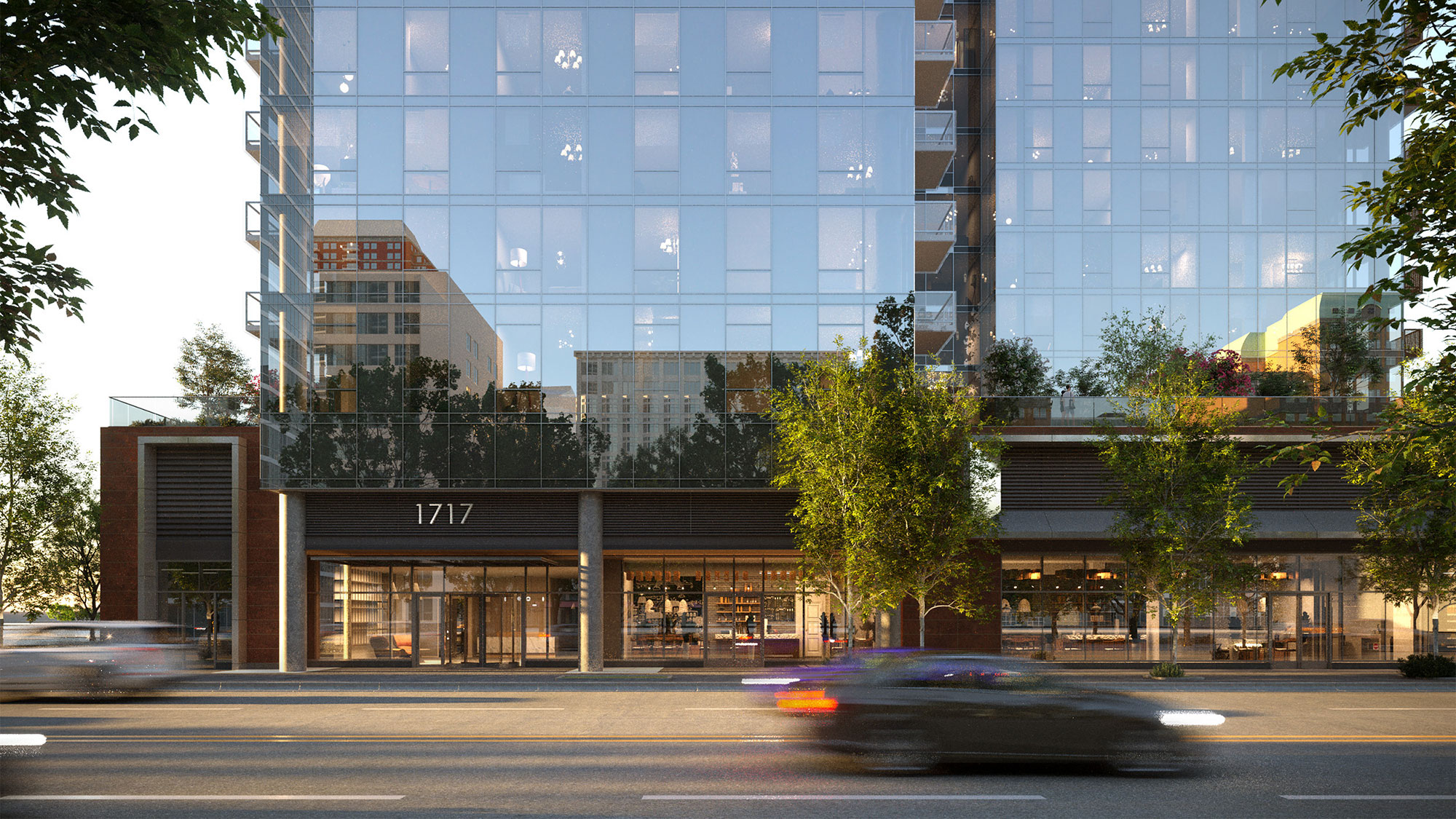
3. Addressing the Economic Realities
The urgency for developments like this is clear. Chicago ranks among the U.S. cities where the cost of living is rising faster than local wages. According to the City Pulse 2025 survey, 71% of Chicagoans are satisfied with the city, but affordability remains a top concern. As demand rises and supply remains tight, housing prices are being driven upward — particularly in walkable, transit-rich neighborhoods.By delivering market-rate housing that is designed to be attainable — not simply affordable in the traditional sense, but realistic and desirable for middle-income earners — projects like 1717 South Michigan fill a critical gap. They help stabilize neighborhoods, attract a diverse resident base, and counteract patterns of exclusivity.
4. Designing for a Multigenerational Future
Multigenerational living is not a trend; it is a return to a time-tested model of community support and resource sharing. Gensler’s own work across cities in Europe and Asia shows the power of homes that adapt to changing family structures. In Chicago, where many residents juggle caregiving for both children and aging parents, this flexibility isn’t just nice to have — it’s essential.
Gensler’s Residential Experience Index reinforces that today’s renters are seeking more than square footage: they are seeking connection, security, and adaptability. By embedding these qualities into the fabric of the building, 1717 South Michigan becomes more than a place to live. It becomes a place to belong.
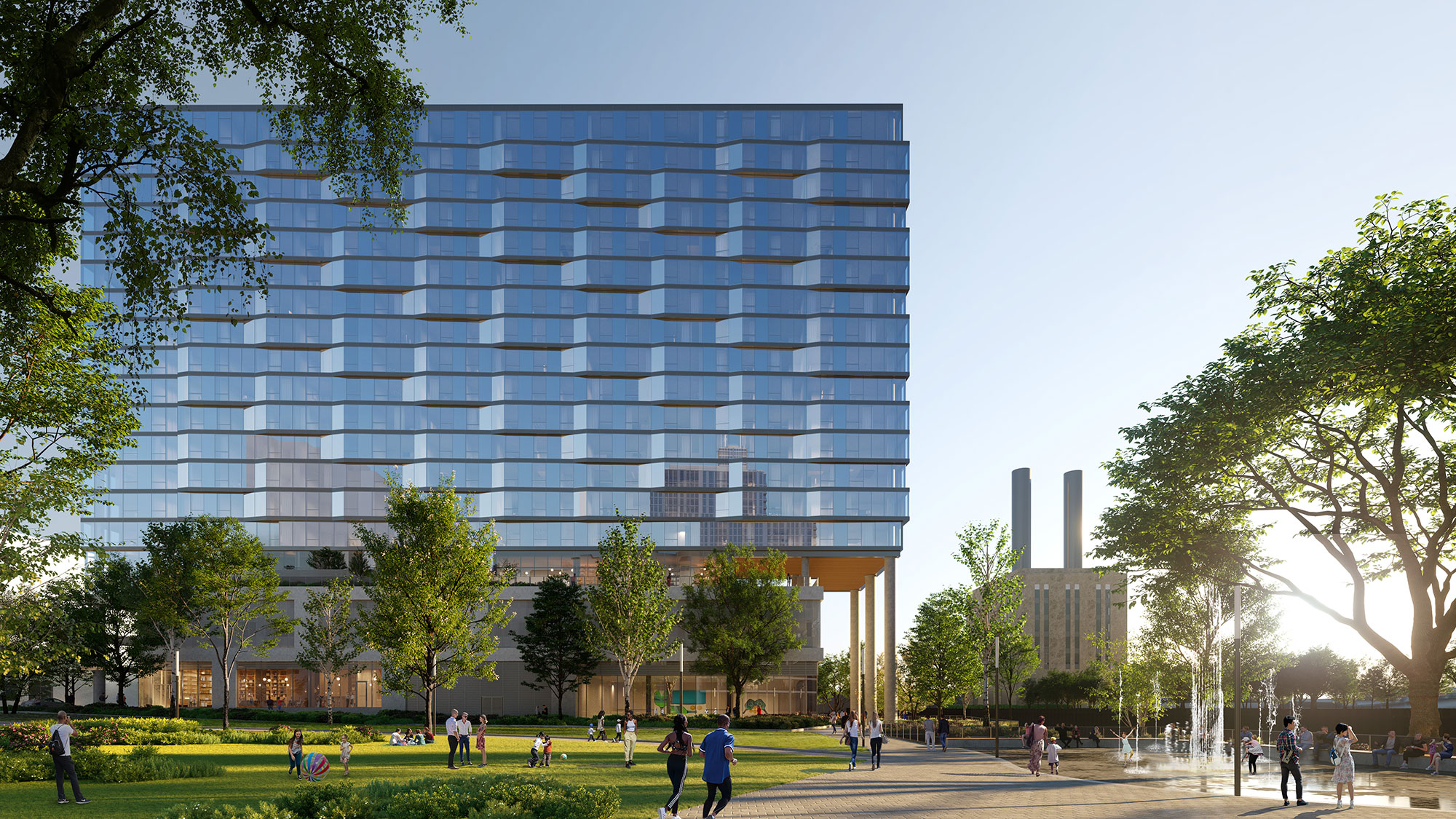
5. Toward a Magnetic City
The concept of the “magnetic city,” explored in Gensler’s City Pulse 2025, underscores a compelling truth: cities thrive not just by attracting people, but by creating the conditions that make them want to stay. These conditions go beyond infrastructure or access to amenities — they involve cultivating emotional connection, civic pride, and a sense of rootedness. A truly magnetic city is one that fosters belonging, nurtures multigenerational presence, and enables all residents to see a future for themselves within its ever-evolving fabric.
Projects like 1717 South Michigan demonstrate how inclusive, design-forward development can reinforce that magnetic pull. With its blend of attainable housing, adaptable units, and community-focused amenities, it offers a living experience rooted in equity, flexibility, and stability. Similarly, 1010 South Wells, developed by CMK Companies and designed by Gensler — another rising residential project in Chicago — brings together active street engagement, a thoughtful mix of unit sizes, and walkable connections to transit and green space. It invites a diverse cross-section of residents to live not only in the city, but with the city.
As Chicago continues to redefine its skyline and its neighborhoods, projects like these signal a shift toward a more resilient, emotionally connected, and equitable future, recognizing that market-rate housing must also be inclusive, and that good design is not a luxury but a public good. To create the cities of tomorrow, we must design for attachment, identity, and a long-term sense of home.
For media inquiries, email .

